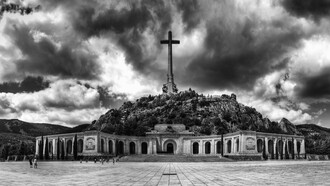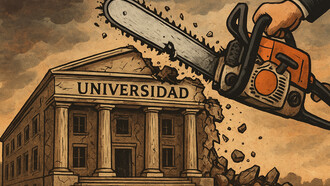A pivotal shift occurred in the history of the church in Georgia when, in 1943, Stalin convened a meeting with three Russian Orthodox hierarchs. This meeting led to the election of the Patriarch of Moscow and All Russia and the establishment of the Most Holy Synod. This marked a significant policy shift, as Stalin sought to incorporate national symbols, including the church, into Soviet ideology. This move was part of a broader strategy to rally public support during World War II, reflecting the pragmatic use of religion to serve state interests.
The restoration of Eucharistic unity between the Russian and Georgian churches occurred in October 1943, following Stalin's directive. While officially attributed to the religious purity of the Georgian Church, Stalin's influence played a significant role. His motivations were complex, aiming to win the hearts of believers during the "Great Patriotic War" and strengthen Soviet ideology. This period illustrates the nuanced relationship between state power and religious institutions, where political expediency often dictated religious policy.
The legacy of the Soviet anti-religious campaign in Georgia
Even though, the Soviet campaign aimed to radically alter and diminish religious beliefs and practices among Georgians, it only partially succeeded. Public displays of faith and organized religious activities were severely restricted, and many churches were closed or repurposed. Religious leaders were persecuted, and religious education was banned. Despite these efforts, the Soviet regime was unable to fully eradicate religious beliefs. Instead, many Georgians adapted by practicing their faith in private. This "domestication" of religion meant that rituals, prayers, and religious teachings were maintained within the family setting, away from the scrutiny of the state. As a result, while the outward and public expressions of faith changed, the core beliefs and practices remained resilient, often becoming even more deeply ingrained as acts of resistance.
One of the most significant and unexpected consequences of the Soviet anti-religious campaign was the emergence and strengthening of an underground religious movement. Religious practices, though banned from public spaces, were conducted covertly in private homes and secret gatherings. Women, in particular, played a crucial role in this underground movement. Their efforts ensured the continuation of religious traditions and the transmission of beliefs despite state repression. This underground movement fostered a resilient religious community and reinforced the association of religion with Georgian national identity. Women's contributions were vital in preserving these traditions, laying the groundwork for the post-Soviet revival of the Georgian Orthodox Church. This period of clandestine worship ultimately strengthened Georgian culture and national identity, demonstrating the profound impact of women's roles in sustaining faith under oppression.
The changes brought about by the Soviet anti-religious campaign had a lasting impact on Georgian culture and traditions. The suppression of public religious practices and the subsequent shift to private, domestic religiosity reinforced the association between religion and national identity. The Georgian Orthodox Church, despite being marginalized, continued to be a symbol of Georgian heritage and identity. The resilience of religious practices during this period contributed to a strong sense of cultural continuity and resistance against Soviet assimilation policies.
When the Soviet Union collapsed, the Georgian Orthodox Church experienced a significant revival. The underground religious movement laid the groundwork for this resurgence, having kept religious traditions and practices alive through decades of repression. This period of clandestine worship reinforced the church's role as a custodian of national identity and cultural heritage. Consequently, in the post-Soviet era, the Church emerged as a powerful societal force, instrumental in the revival of Georgian nationalism and the preservation of Georgian cultural and religious traditions.
Influence of the "Red Church" phenomenon
The influence of the "Red Church" phenomenon during the Soviet era continues to shape the Georgian Orthodox Church today. The legacy of Soviet-era repression and the strategic compromises made by church leaders have left a lasting impact on the GOC's internal dynamics and external positioning. During the Soviet period, the Church's alignment with state interests and the subsequent division between loyalists and dissidents created a precedent for internal schisms and ideological conflicts.
Today, the echoes of this phenomenon are visible in the GOC's struggle between moderate and radical factions. The radicalization of certain clergy and the promotion of anti-Western, pro-Russian narratives can be seen as a continuation of the historical tension between accommodation with state power and the preservation of religious integrity. The current internal power struggles and the rise of radical voices within the GOC reflect a complex legacy of historical compromises and ideological divisions.
In contemporary Georgia, the relationship between the Georgian Orthodox Church and the government is characterized by a notable interdependence rather than strict separation, despite constitutional provisions. This interplay is rooted in historical contexts, including the Church's resurgence after Soviet repression and its subsequent role in shaping Georgian society.
Politically, the Church holds significant sway, particularly in rural and conservative areas, where it can mobilize public opinion and influence electoral outcomes. This influence is reciprocal, as political leaders often seek the church's endorsement, recognizing its ability to bolster legitimacy and public support. This alignment is particularly evident in national sovereignty issues, where the Church's stance can significantly impact political narratives and policy decisions.
Despite the constitutional mandate for separation, the Church's involvement in public policy and legislative debates underscores its role in shaping governance. Its views on issues such as family law and education curriculum are influential, reflecting a broader societal deference to religious authority in moral and ethical matters.
Conclusion
The history of the Georgian Orthodox Church (GOC) under Soviet rule and its subsequent evolution in post-Soviet Georgia offers valuable insights into the intricate relationship between religion and authoritarian states. Throughout the Soviet era, the GOC faced systematic repression aimed at undermining its influence and consolidating state control over societal values and institutions. This repression, including the confiscation of church property, harassment of clergy, and propagation of atheism, exemplifies the authoritarian regime's strategy to curb dissent and mould public opinion through ideological dominance.
One key takeaway is the GOC's resilience in the face of authoritarian suppression. Despite concerted efforts to diminish its influence, the Church adapted its strategies to survive, sometimes by aligning with state interests during periods of war or relaxing of restrictions, as seen in its revival during World War II. This adaptability underscores how religious institutions can manoeuvre within authoritarian frameworks, sometimes leveraging moments of political opportunity to preserve their role in society.
Moreover, the GOC's role evolved from a marginalized entity under Soviet rule to a central pillar of Georgian national identity in the post-Soviet period. This transformation highlights the potential for religious institutions to reassert themselves following periods of repression, often becoming focal points for cultural preservation and national solidarity. The Church's ability to influence public discourse and shape societal values in the aftermath of Soviet collapse underscores its enduring relevance and capacity to fill ideological voids left by retreating state structures.
The legacy of the "Red Church" phenomenon continues to influence the GOC's contemporary dynamics, particularly in its relationship with the Georgian government and broader society. The historical backdrop of state-enforced secularism and subsequent religious revival informs ongoing debates about the separation of church and state, the extent of religious freedoms, and the role of religious institutions in public life. In navigating these complexities, the GOC faces challenges in balancing its spiritual mission with political pressures and societal expectations, reflecting broader struggles over identity and authority in modern Georgia.
This history offers insights into the broader role of religion in authoritarian states, illustrating how religious institutions can both challenge and accommodate state power depending on the political context. It highlights the complexities of religious-state relations, including the potential for collaboration, co-option, or conflict, and underscores the enduring influence of religious institutions in shaping societal norms and values even under restrictive regimes. Understanding these dynamics is crucial for comprehending the interplay between religion, politics, and identity in authoritarian contexts worldwide.
This article was written by Lika Kobeshavidze. Lika is a Georgian political writer, analytical journalist and fellow with Young Voices Europe, specialising in EU policy and regional security in Europe. She is currently based in Lund, Sweden, pursuing advanced studies in European Studies.















